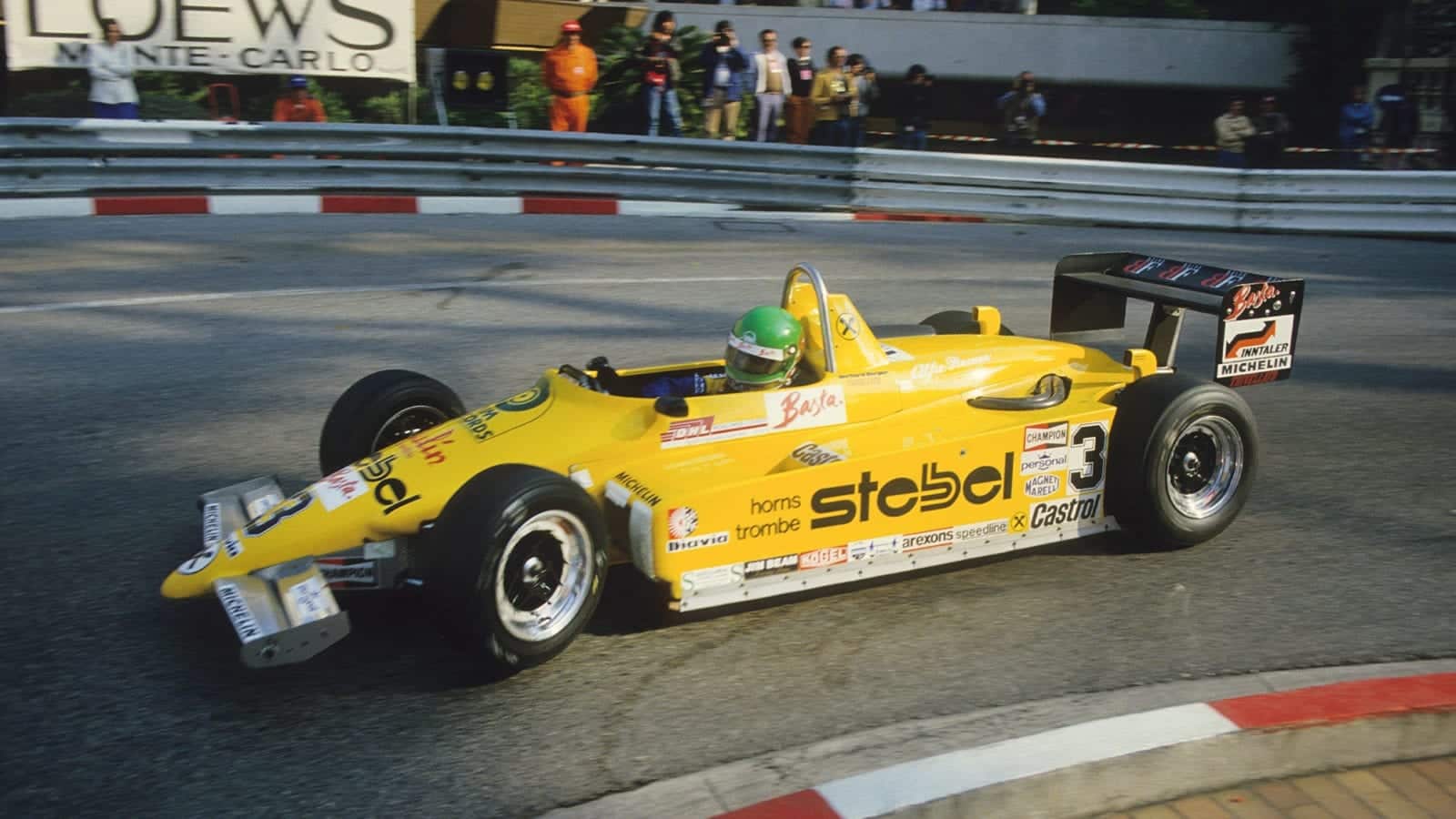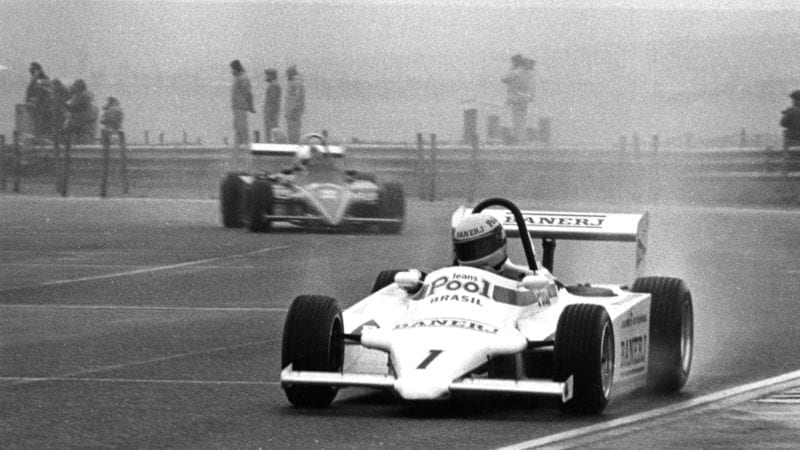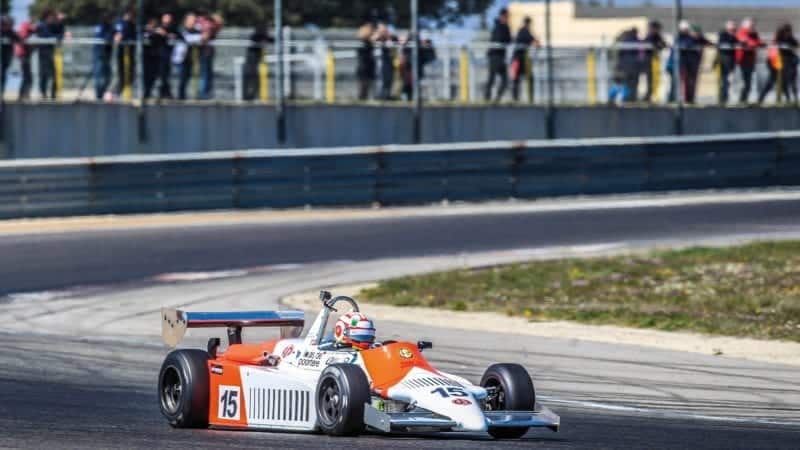Race car buying guide: Ralt RT3
Before it became a homogenised chassis category, Formula 3 was a hotbed for innovation, and the RT3 led the way

Gerhard Berger spent three seasons in F3, finishing third in the 1984 European series with Trivellato’s Ralt RT3
Ayrton Senna, Martin Brundle, Tommy Byrne, Stefan Johansson, Gerhard Berger, Emanuele Pirro, Gabriele Tarquini, Ronnie Peterson… the list goes on. The link between them all? They all used a Ralt RT3 during the formative stages of their careers. Whether it launched them to giddy Formula 1 heights, Le Mans successes, tin-top shenanigans or wherever, over its six-year lifespan the RT3 created more motor racing stars than any other junior-formula car.
And the technical team behind it wasn’t half bad either, it being the brainchild of Ron Tauranac, the genius designer and engineer who helped launch Brabham into the stratosphere before turning his attentions to offerings more humble. And it so nearly never even came into existence.
We can thank Bernie Ecclestone that it did. When the future tsar of F1 opted to buy out the Brabham Formula 1 team in 1972, its former chief Tauranac found himself with time on his hands. After some fleeting work with Williams and an F5000 project, he went back to Australia with the intention to retire, but all that did was relight an old flame.

The 1983 British F3 season featured a head-to-head between Senna (no1) and Martin Brundle, both with Toyota-powered RT3s
When he first started in the sport, Ron and his brother Austin Lewis toyed with building hillclimb specials codenamed RALT after their combined initials – Ron, Austin, Lewis, Tauranac. That would lead to Ron meeting Jack Brabham and kick-starting his incredible career. But when all that was over, could there be a market for offerings further down the ladder?
Tauranac was convinced so and returned to Europe to officially found Ralt as a company in 1974 with the intention of supplying ready-to-race cars into Formula 2 and 3 from a new factory in Woking.
His first offering, the RT1, appeared for 1975, and was built to be strong, reliable and adaptable to accommodate either the Ford, Toyota or Volkswagen F3 power plants. Larry Perkins netted a pair of wins during its first British championship season on his way to fifth in the points. That was a fair start, but up against the might of Chevron and March, Ralt endured a long gestation period. There were a smattering of wins across the next few seasons until Nelson Piquet finally netted Ralt a first British crown in 1978. And then the sport changed entirely.
Aerodynamics and ground-effect took their time to trickle down but arrived in F3 for 1979, whether the teams were ready or not. It turned out that most weren’t. While March and Chevron both adapted current models with the now-legal wings and skirts, Ralt used its experience with the F2 RT2 and designed an all-new offering for the new rules – but this decision kept Ralt out of the picture for longer than ideal. The RT3 featured a narrow aluminium tub, honeycomb bulkheads, inboard suspension, a centrally mounted fuel tank and a low-slung shape coupled to the wide sidepods and skirts. However, production was slow, and only a handful appeared by the end of the year.
But 1980 would be when the RT3 realised its potential. Stefan Johansson was already leading the British championship for Ron Dennis’s Project 4 team when he swapped from his tricky-to-set-up March 803 to an RT3, and once he had he was untouchable, dominating the final races. In the German series, RT3s finished first and second, and the tone was set.
Across the next four seasons nothing but an RT3 would win the British championship. March even gave up building F3 cars entirely by 1982, the same year an RT3 won every British championship race.

This Alfa-powered Ralt RT3 was seen in the 2019 Historic Tour Ledenon’s F3 race, up against its old enemies such as March and Chevron
The RT3 would provide the platform for Senna’s first F3 win – a non-championship winter event at Thruxton in 1982 – and his epic title battle with Brundle during 1983. And the RT3 grew as it went, being refined before each new campaign.
By 1985 the rule-makers were growing concerned about speeds, so demanded that flat-bottomed cars become mandatory, ruling the RT3 out, to be replaced by the RT30.
The numbers across the RT3’s lifetime were startling. Four British championship titles from five seasons, the same in Germany. A host of RT3s are still active in the FIA’s Historic Formula 3 European Cup – launched in 2018 – keeping one of the sport’s defining designs in competition.
